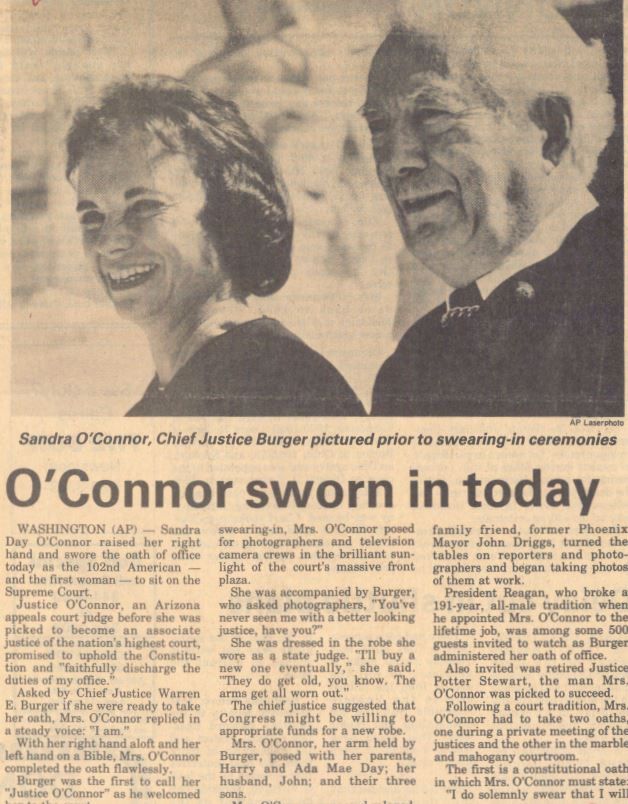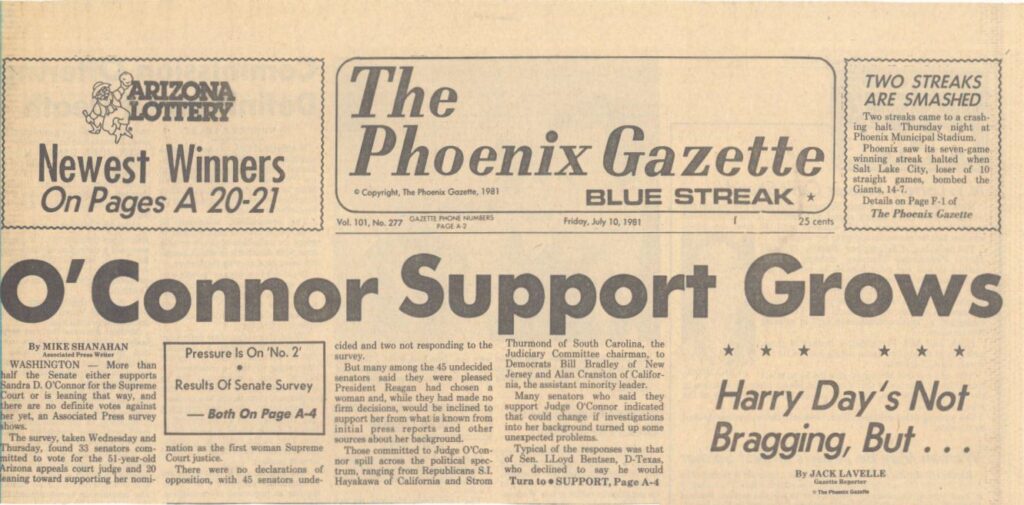O’Connor takes oath
WASHINGTON (AP) – Sandra Day O’Connor raised her right hand and swore the oath of office today as the 102nd American – and the first woman – to sit on the Supreme Court. Vowing to “do equal right to the poor and to the rich,” the former Arizona legislator and appeals court judge became Justice O’Connor during a brief ceremony in the marble and mahogany courtroom of the nation’s highest court. President Reagan, who broke a 191-year tradition when he appointed O’Connor to the lifetime position, was among the 500 guests who watched Chief Justice Warren E. Burger administer the oath of office. Also on hand was retired associate justice Potter Stewart, whom O’Connor replaced. Two hours earlier, O’Connor had posed for photographers and television camera crews in the brilliant sunlight of the court’s massive front plaza. Burger, who accompanied her, asked photographers, “You’ve never seen me with a better looking justice, have you?” Asked how she felt on the threshold of history, O’Connor smiled and replied, “Just great.” She was dressed in the robe she wore as a state judge. “I’ll buy a new one eventually,” she said. “They do get old, you know. The arms get all worn out.” Burger suggested Congress might be willing to appropriate funds for a new robe . O’Connor, her arm held by Burger, posed with her parents , Harry and Ada Mae Day; her husband, John; and their three sons . O’Connor appeared relaxed, and laughed heartily as a close family friend, former Phoenix Mayor John Driggs ,



